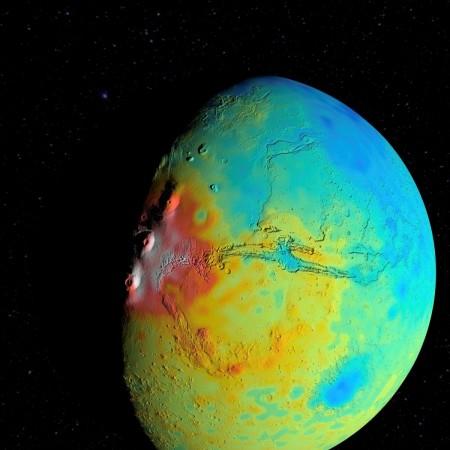
According to a new significant finding on Mars by NASA, the Red Planet is not as dense as it was thought to be.
ALSO READ: Bacteria spotted 'shape-shifting' on NASA's ISS; could pose danger to astronauts
The finding will help understand more about the interior structure and evolution of the Red Planet.
Top thing to know about the finding:
1. Mars' crust was not found to be as dense as it was previously speculated to be. The finding points towards a porous Mars surface. Astronomers also speculate the planet has a different mineral composition or a thinner crust.
2. "The crust is the end-result of everything that happened during a planet's history, so a lower density could have important implications about Mars' formation and evolution," said Sander Goossens of NASA's Goddard Space Flight Center in Greenbelt, Maryland. Goossens is the lead author of a Geophysical Research Letters paper describing the finding.
3. The density of the Martian crust was mapped by the astronomers; the average was estimated to be 2,582 kilograms per meter cubed (about 161 pounds per cubic foot). It was previously believed that the crust of the Red Planet was as thick as Earth's oceanic crust which measures around 2,900 kilograms per meter cubed (about 181 pounds per cubic foot).
4. "As this story comes together, we're coming to the conclusion that it's not enough just to know the composition of the rocks," said Goddard planetary geologist Greg Neumann, a co-author on the paper. "We also need to know how the rocks have been reworked over time."
5. "With this approach, we were able to squeeze out more information about the gravity field from the existing data sets," said Goddard geophysicist Terence Sabaka, the second author on the paper.
6. The density of the moon's crust essentially matched the GRAIL result of 2,550 kilograms per meter cubed (about 159 pounds per cubic foot), as per a statement by NASA.
"The crust is the end-result of everything that happened during a planet's history, so a lower density could have important implications about Mars' formation and evolution," said Sander Goossens of NASA's Goddard Space Flight Center in Greenbelt, Maryland.
7. The new mode generated by astronomers helped them create global maps about the density and thickness of the crust. The discoveries will help the researchers to find out the density of the crust existing beneath the giant volcanoes of the Red Planet.

















